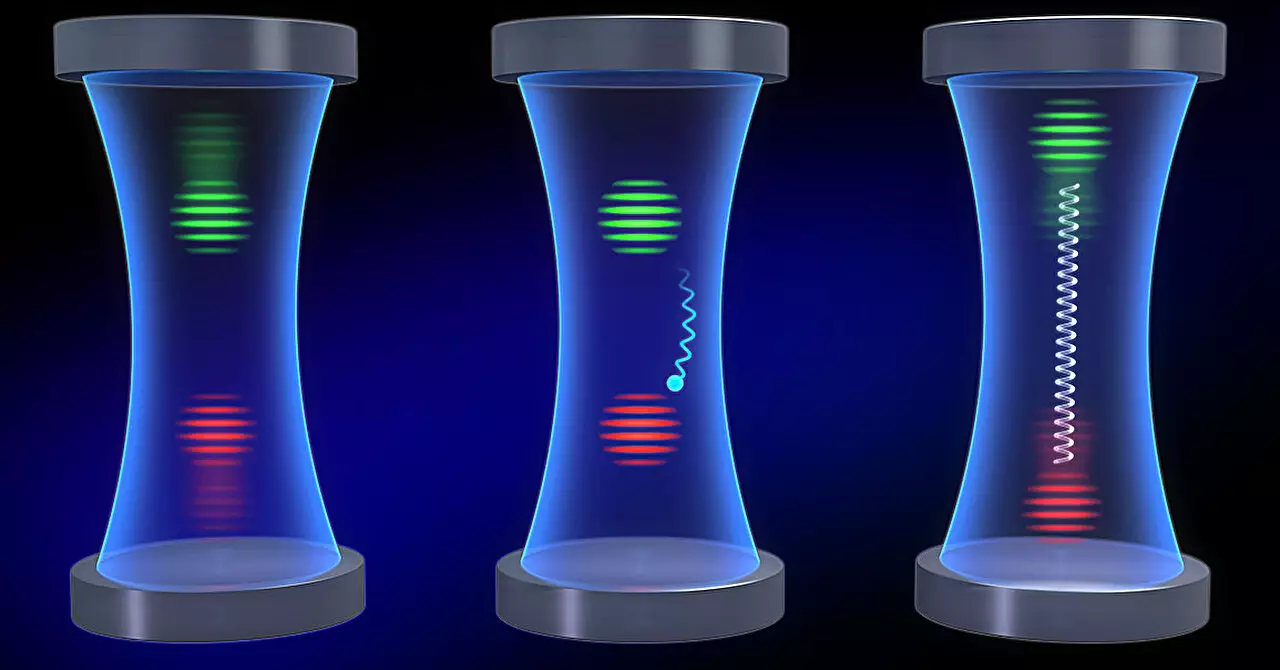The precise measurement of energy states in individual atoms has long been a challenge for physicists due to atomic recoil. This phenomenon occurs when an atom interacts with a photon, causing the atom to recoil in the opposite direction. The recoil makes it difficult to accurately measure the position and momentum of the atom. However, a recent study published in Science by JILA and NIST Fellows has proposed a novel approach to overcome this issue through momentum-exchange interaction.
The Momentum-Exchange Interaction
In this groundbreaking study, researchers demonstrated a new type of atomic interaction known as momentum-exchange interaction. By exchanging photons, atoms were able to exchange their momentums, leading to a collective absorption of energy within a cavity. This process effectively dampened the atomic recoil, dispersing it among all particles within the confined space. The results of this study offer significant implications for quantum sensing and experimental design, allowing researchers to better understand complex systems and explore new aspects of quantum physics.
Quantum Entanglement and OAT Dynamics
For the first time, researchers observed the induction of one-axis twisting (OAT) dynamics through momentum-exchange interaction. OAT is a form of quantum entanglement that entwines the momentum states of different particles, allowing for the reduction of quantum noise. This newfound ability to entangle momentum states could lead to advancements in quantum sensors, particularly in the detection of phenomena like gravitational waves.
Controlling Atomic Recoil
Researchers in the study found that they could effectively control atomic recoil by manipulating the exchange of photons between atoms. This exchange of energy led to the creation of a density grating, signifying coherence between momentum states within the atoms. By exploring the interplay between the density grating and the optical cavity, researchers were able to induce momentum exchange and disperse recoil among the entire population of atoms within the system.
One of the significant challenges in precise measurement within quantum physics is the Doppler shift, which describes the change in frequency of a wave due to relative motion. The researchers in this study discovered that their method could mitigate measurement distortion caused by the Doppler shift. By dispersing the recoil among all atoms in the system, the researchers were able to minimize the impact of the Doppler shift on measurements, enhancing precision in spectroscopy.
Moreover, the momentum exchange between atoms was found to induce a form of quantum entanglement. As atoms collectively responded to changes in cavity frequency, their motions became correlated, indicating a level of entanglement between the particles. By creating a greater separation between momentum states and inducing momentum exchange, researchers observed continued interconnected behavior among the atoms, resembling the oscillation of connected particles.
Future Directions
Looking ahead, researchers plan to further explore this newfound form of quantum entanglement to uncover its full potential in improving various quantum devices. By delving deeper into the mechanisms underlying momentum-exchange interaction, scientists aim to harness quantum entanglement for enhanced sensing capabilities and innovative experimentation in the field of quantum physics.
The study on momentum-exchange interaction marks a significant advancement in the understanding and manipulation of atomic energy states. By controlling atomic recoil, mitigating measurement challenges, and inducing quantum entanglement effects, researchers have opened up new possibilities for quantum sensing and experimentation. The exploration of momentum-exchange interaction paves the way for exciting developments in quantum physics and beyond.



Leave a Reply